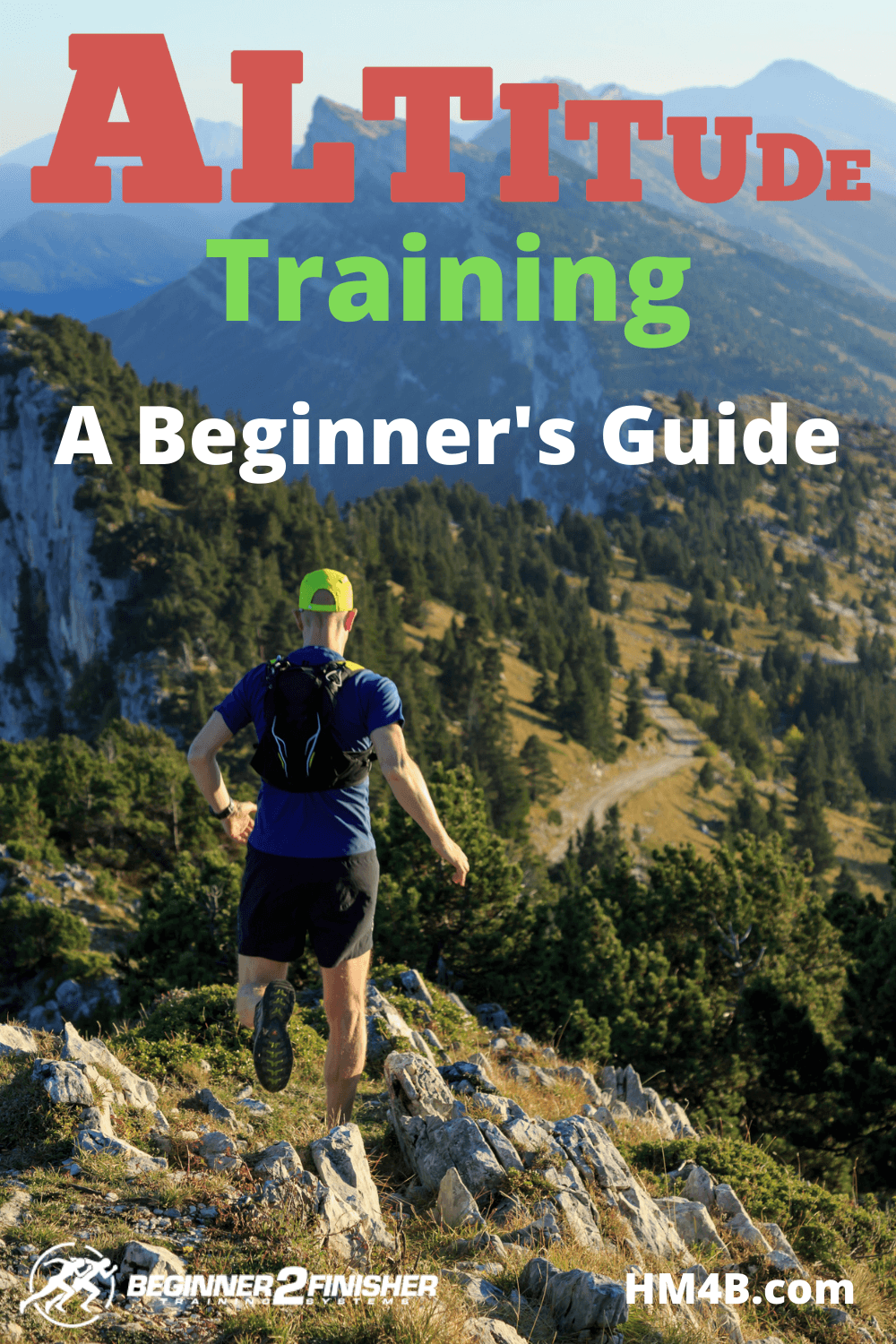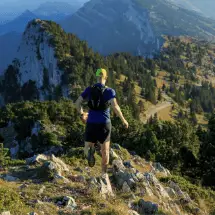Running as a sport has stood the test of time. From its historic origins rooted in Olympians, to an everyday hobby for millions around the world, running is as much an exercise routine as it is a cultural phenomenon.
It’s rugged, and it’s simple. It’s you against the ground. It’s you against your body and mind. It’s about pushing your physical condition and capabilities to the limit. But there are different stages of running; maybe you’re a short-distance runner, or maybe you’re a regular marathoner.
For some of you, the next step could be altitude running. This how-to guide is going to cover the basics, all the way from the adjustment period to the physical effects and benefits. Let’s pound that pavement (from way up high).
How long does it take to become adjusted to altitude?
Contrary to what many may think, to be an altitude runner you don’t have to be in the clouds.
Running at altitude may be at certain heights but it’s certainly not something that will be dangerously high. Technically, altitude running officially can start as low as sea level and work upwards from there. Maybe your run starts at a few hundred feet and ends at a few thousand.
In any case, it’s going to take some adjustment. How long, you ask? Well, that depends on your current aerobic fitness level. The key thing to remember is you’re going to struggle to get as much oxygen onboard the higher you go, so it’s best to start slow and build up.
Try running up and down some hills that have some elevation and pay close attention to how your body responds. Then have a go running around an area where you know there’s some elevation, and once you’re comfortable, move up to somewhere higher.
Listen to your body and, possibly, more importantly, your lungs. Once you’ve mastered the breathing and how much you can take on board it’ll be time to move up in the world (pun intended).
What’s the formula for adjusting your pace/speed when training at altitude?
Try doing some speed training, hills, and get plenty of rest in between runs. Altitude running is significantly harder on your body, so you want to be very careful and deliberate when training.
Speed and pace will become easier once you’re acclimated, so try getting your more intense, short, anaerobic competency to a higher level. Once you’re feeling like your lungs are coping and your muscles are recovering, you can try the same at the next level. When you’ve just started altitude training you’re going to have to suck it up (not oxygen-that might help) – but your ego. You will run at a slower pace for quite some time until you become acclimated to the higher altitude. How slow will you go? This varies from runner to runner but your pace could vary anywhere from 15 seconds to 2 or more minutes.
Just remember, intensity training at sea level will be the same as normal training at altitude.
Will I run faster or slower at altitude?
It’s logical to think you’ll be running slower at altitude. Thinner air means deeper breaths to gain necessary oxygen flow, and your body may not be able to keep up.
Conversely, being at higher altitudes means less resistance. Your body isn’t needing to wade through thicker air, and some runners say that running at altitude can actually make your body feel like it’s floating or flying through the air.
Initially, it’ll feel slow, but this will be due to the added strain on your body. Once you acclimate, your body will have added capability to get oxygen around your bloodstream and to your muscles. You’ll really be flying then.
Related: 11 Reasons Why Your Running Performance Isn’t Improving!
Will altitude training make me a better runner?
Almost certainly. We could use a bit of a cop-out here and say that any training will make you a better runner, but we’ll refrain.
Many top athletes have used altitude masks to hone their aerobic fitness. These products mimic the effects of thinner air by making it harder to draw breath. The theory is that if our bodies can still perform at high levels when the conditions aren’t perfect, we’re going to improve our fitness and lung strength.
Keeping this idea in mind, running at altitude will have the same effect. Although the science is still out on this, we consider training at altitude to improve your overall health and, at the very least, resilience when it comes to running in different scenarios.
Do elites train at altitude to become more conditioned?
Most do, yes. Athletes from all walks of life will turn to altitude training to improve their overall performance. As mentioned, some turn to products like altitude masks to mimic the same effects and therefore yield the same benefits.
This will be most noticeable when you return to lower altitudes. People tout bettering their personal bests, pace, splits, and overall speed.
For context, the next Olympics are in Mexico, with many running events starting at 7,000 feet. Many athletes will up their training altitude by thousands of feet so they can perform at their best on race day.
What is physically happening to your body when you train at altitude?
When your body is at an oxygen deficit, which is what naturally occurs when the air thins out at altitude, it’s forced to produce more red blood cells to carry more oxygen through your bloodstream and to your muscles so they can function.
This is similar to what happens when athletes seek added performance illegally. You may have heard of blood doping, a controversial (and widely banned) practice whereby the athlete purposely adds red blood cells to their bloodstream so they can carry more oxygen.
Altitude is a good metaphor for this; it’s the legal alternative to blood doping due to the natural adding of red blood cells. Added performance that’s naturally occurring physiologically rather than nefarious.
Is training at altitude bad for you?
Any kind of unregulated training can lead to running injuries or other health problems. Running is a sport that is good for your heart and fitness, however, doing too much too soon can be risky.
Some athletes and runners report faintness, extra fatigue, dehydration, and muscle cramps when running at higher altitudes than usual. So it’s not necessarily bad for you, but it’s essential to keep your wits about you when getting into this kind of running.
The most common effect might be altitude sickness. To counter this, add levels to your training incrementally over time.
Should beginner runners train at altitude?
You probably already know the answer to this. We think you should get to a point of good running fitness and health before foraying into altitude running. It’s leaning towards the more extreme-sport end of the spectrum and should be carefully considered before partaking.
That being said, you can start slow. Talk to other runners and gather information. Altitude training for runners is an exciting extension to the sport and pushes the boundaries of what is possible for humans and their physical accomplishments.
Conclusion
Altitude running can lead to some real highs, both literally and figuratively speaking.
If you’re a beginner runner, you need to be careful. Everything becomes intensified when altitude training and running. Your body is under far more stress and is fighting the elements to ensure the right amount of oxygen is being taken on board.
If you can master the art and science you’ll certainly become a better runner and athlete. Follow these steps closely and take it slow. Before long, you’ll improve your aerobic capacity faster than thought possible.
Related: 22 Tips For Absolute Beginner Runners
| Help support me and subscribe to my YouTube channel. YouTube video - 30 ways to make your runs less painful! Coach Scott's Credentials:
|
To sign up for a FREE half marathon training schedule, log sheet, and pace predictor CLICK HERE.

Recommended gear for runners
Connect with me:
| facebook.com/BeginnerToFinisher/ |
References
https://www.active.com/running/articles/the-effects-of-high-altitude-training
https://worldsmarathons.com/article/running-at-altitude-what-are-the-effects-and-how-to-train-for-it


